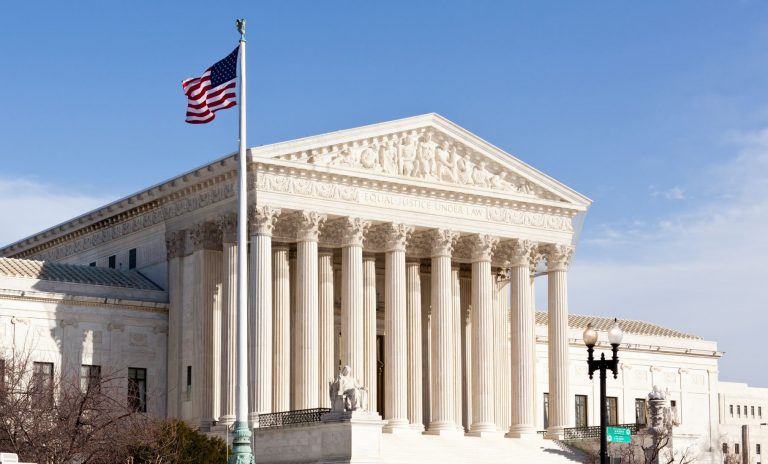Congress Passes Important Amendments to Jurisdictional and Venue Statutes
Congress Passes Important Amendments to Jurisdictional and Venue Statutes
In late 2011, Congress passed and President Obama signed into law The Federal Courts Jurisdiction and Venue Clarification Act of 2011 (“the Act”). Even though the Act passed with little publicity, it implemented a number of important changes to the federal jurisdiction and venue statutes, which will restrict access to federal courts and affect new filings or matters removed to federal courts. The Act went into effect on January 9, 2012. The stated goals and objectives for the amendments, as described in the Committee Judiciary Report on the Act, were to make clear “the operation of Federal jurisdictional statutes and assist[] Federal judges in identifying the appropriate State or Federal court where actions should be brought.”[1] The following are highlights of some of the changes arising from this legislation.
Section 101 of the Act amended 28 U.S.C. § 1332(a)(2) by eliminating the resident alien proviso. Under the amendment, diversity of citizenship is no longer present where the action is between a citizen of a state and a citizen or subject of a foreign state admitted to the U.S. for permanent residence and domiciled in the same state. The statute now provides, in pertinent part,
The district courts shall have original jurisdiction of all civil actions where the matter in controversy exceeds the sum or value of $75,000, exclusive of interest and costs, and is between . . . citizens of a State and citizens or subjects of a foreign state, except that the district courts shall not have original jurisdiction under this subsection of an action between citizens of a State and citizens or subjects of a foreign state who are lawfully admitted for permanent residence in the United States and are domiciled in the same State[.]
Congress also wanted to “clarify how [a corporation’s or insurance company’s] foreign contacts should affect the determination of whether diversity exists when a case involving these entities is filed in or removed to Federal court.”[2] As a result, the manner in which citizenship is determined in actions involving corporations and insurance companies was addressed by Section 102 of the Act. 28 U.S.C. § 1332(c)(1) now provides that “a corporation shall be deemed to be a citizen of every State and foreign state by which it has been incorporated and of the State where it has its principal place of business . . ..” Under this amendment, access to Federal courts based on diversity of citizenship is significantly limited as diversity of citizenship is destroyed where (1) a foreign corporation sues, or is sued by, a citizen of the same state(s) where the foreign corporation was incorporated or maintains its principal place of business; and (2) a where a citizen of a foreign country sues a U.S. corporation with its principal place of business abroad.
This definition applies in a similar manner to insurance companies involved in a direct action. So, for purposes of diversity of citizenship, the insurer’s citizenship is deemed to be a citizen (1) of the state where its insured is a citizen; (2) of the state where the insurer was incorporated; and (3) the state where it maintains its principal place of business.[3]
Amendments to the removal and remand procedures were equally significant. Section 103 of the Act amended the removal and remand procedures set forth in 28 U.S.C. §§ 1441 and 1446. Toward that end, 28 U.S.C. § 1441(c) was amended to further promote the purpose “for which the statute was originally designed, namely to provide a Federal forum for resolution of Federal claims that fall within the original jurisdiction of the Federal courts.”[4] Under the prior version of §1441(c), an entire action could have been removed “whenever a ‘separate and independent’ Federal question claim was joined with one or more non-removable claims.”[5] The district court also had the discretion to retain jurisdiction over the entire action or “remand all matters in which state law predominates.”[6] While removal of claims arising under federal law is still available, the amendment requires a district court to sever and remand unrelated state law matters.[7] Section 1441(c) provides:
Joinder of Federal law claims and State law claims.—
(1) If a civil action includes . . . (A) a claim arising under the Constitution, laws, or treaties of the United States (within the meaning of section 1331 of this title), and (B) a claim not within the original or supplemental jurisdiction of the district court or a claim that has been made nonremovable by statute, the entire action may be removed if the action would be removable without the inclusion of the claim described in subparagraph (B).
(2) Upon removal of an action described in paragraph (1), the district court shall sever from the action all claims described in paragraph (1)(B) and shall remand the severed claims to the State court from which the action was removed. Only defendants against whom a claim described in paragraph (1)(A) has been asserted are required to join in or consent to the removal under paragraph (1).
28 U.S.C. § 1446 was amended to separate the removal procedures for criminal and civil actions. This change was implemented by enacting a new section, 28 U.S.C. § 1454, for criminal matters.
28 U.S.C. § 1446(b) was amended to add new subparagraphs:
- (b)(2)(A) “codifies the well-established ‘rule of unanimity’ for cases involving multiple defendants”[8] in cases removed only under 28 U.S.C. 1441(a);
- (b)(2)(B) states that each defendant has thirty days, from their individual date service or receipt of initial pleading, to seek removal; and
- Under (b)(2)(C), earlier-served defendants may join or agree to removal by a later-served defendant.
28 U.S.C. § 1446(c) was also amended. Subsection (c)(1) now includes a narrow exception to the one-year removal timeframe. It provides that a case removed based on diversity of citizenship “may not be removed under subsection (b)(3) on the basis of jurisdiction conferred by section 1332 more than 1 year after commencement of the action, unless the district court finds that the plaintiff has acted in bad faith in order to prevent a defendant from removing the action.”
New subsection (c)(2) permits a defendant to allege in the notice of removal that the amount in controversy exceeds $75,000 “if the initial pleading seeks non-monetary relief or a money judgment … where the state practice either does not permit demand for a specific sum or permits recovery of damages in excess of the amount demanded.”[9] Under (c)(2)(B), the defendant has the burden of showing that the amount in controversy exceeds $75,000 by a preponderance of the evidence.
Several changes were also implemented to the venue statute. Section 201 of the Act created 28 U.S.C. § 1390. Subsection (a) defines the term “venue,” which “distinguishes between venue (a geographic specification of the appropriate forum for litigation) from other provisions of Federal law that operate as restrictions on subject-matter jurisdiction.”[10] Subsection (b) clarifies that admiralty actions are excluded from the general venue provisions. Subsection (c) also explains that the venue statutes do not dictate how venue is determined for a case removed to federal court.
28 U.S.C. § 1391, which generally concerns determination of venue, was also amended by the Act. The “local action rule” was abrogated under § 1391(a)(2), and resulted in the repeal of 28 U.S.C. § 1392 (which concerned “Defendants or property in different districts in same State”). § 1391(c) was added and sets forth the method for determining the residence of a (1) natural person, (2) entities, irrespective of their incorporation status, and (3) defendants who are not U.S. residents.
Lastly, Section 204 of the Act changed the procedure for transfer of actions under 28 U.S.C. § 1404. In that regard, § 1404 (a) allows parties to consent to transferring an action “to any district or division to which all parties have consented, even if the action could not have been brought in that district or division originally.”[11] § 1404(a) states: “For the convenience of parties and witnesses, in the interest of justice, a district court may transfer any civil action to any other district or division where it might have been brought or to any district or division to which all parties have consented.”






